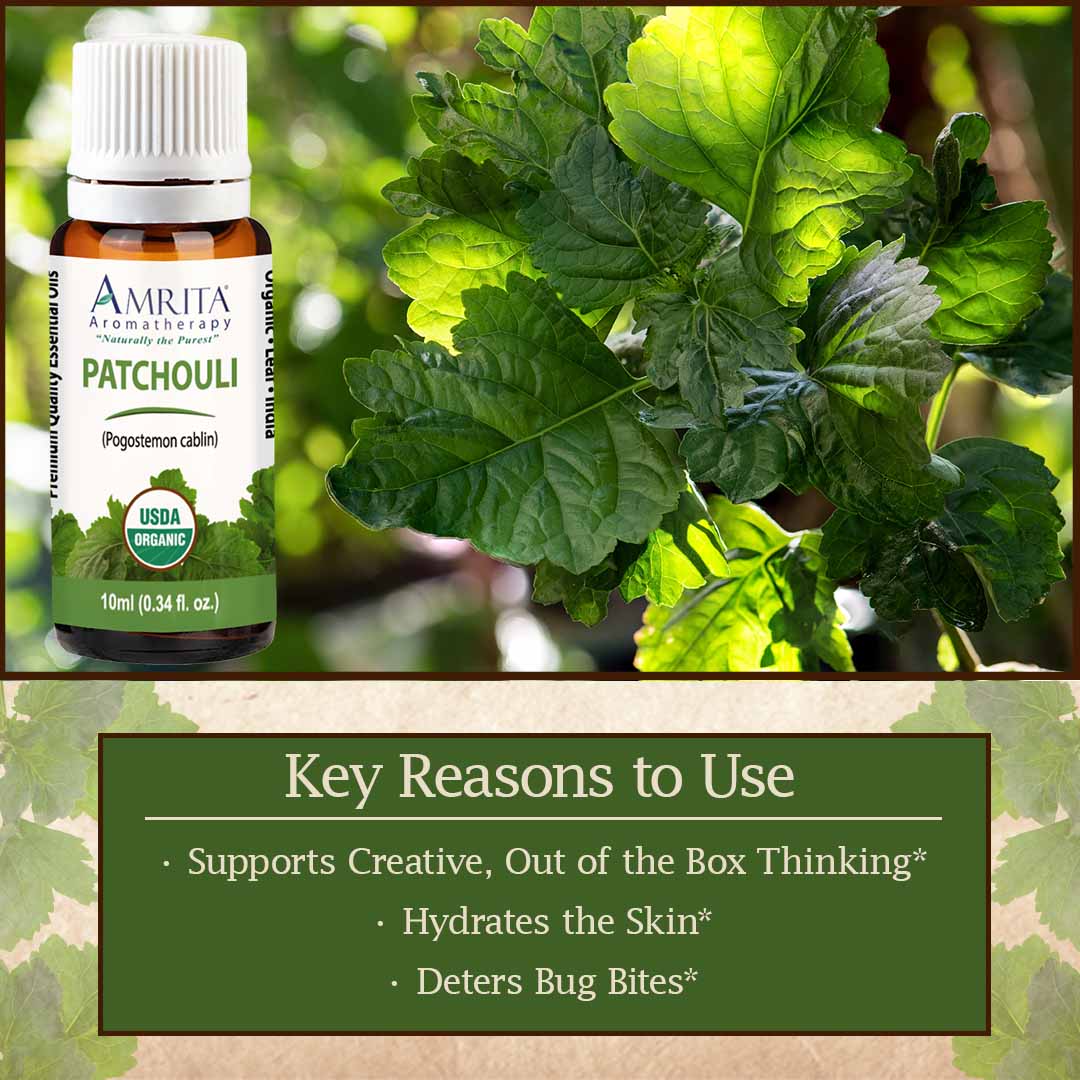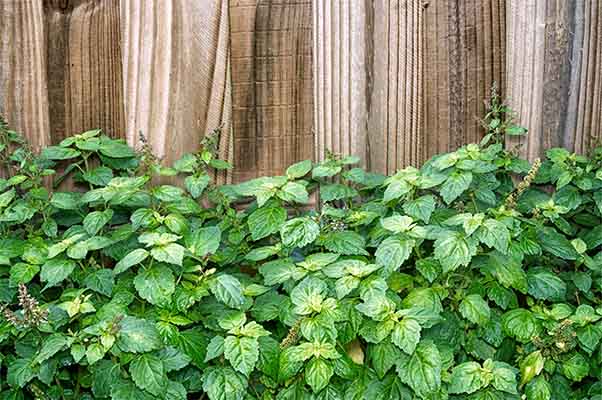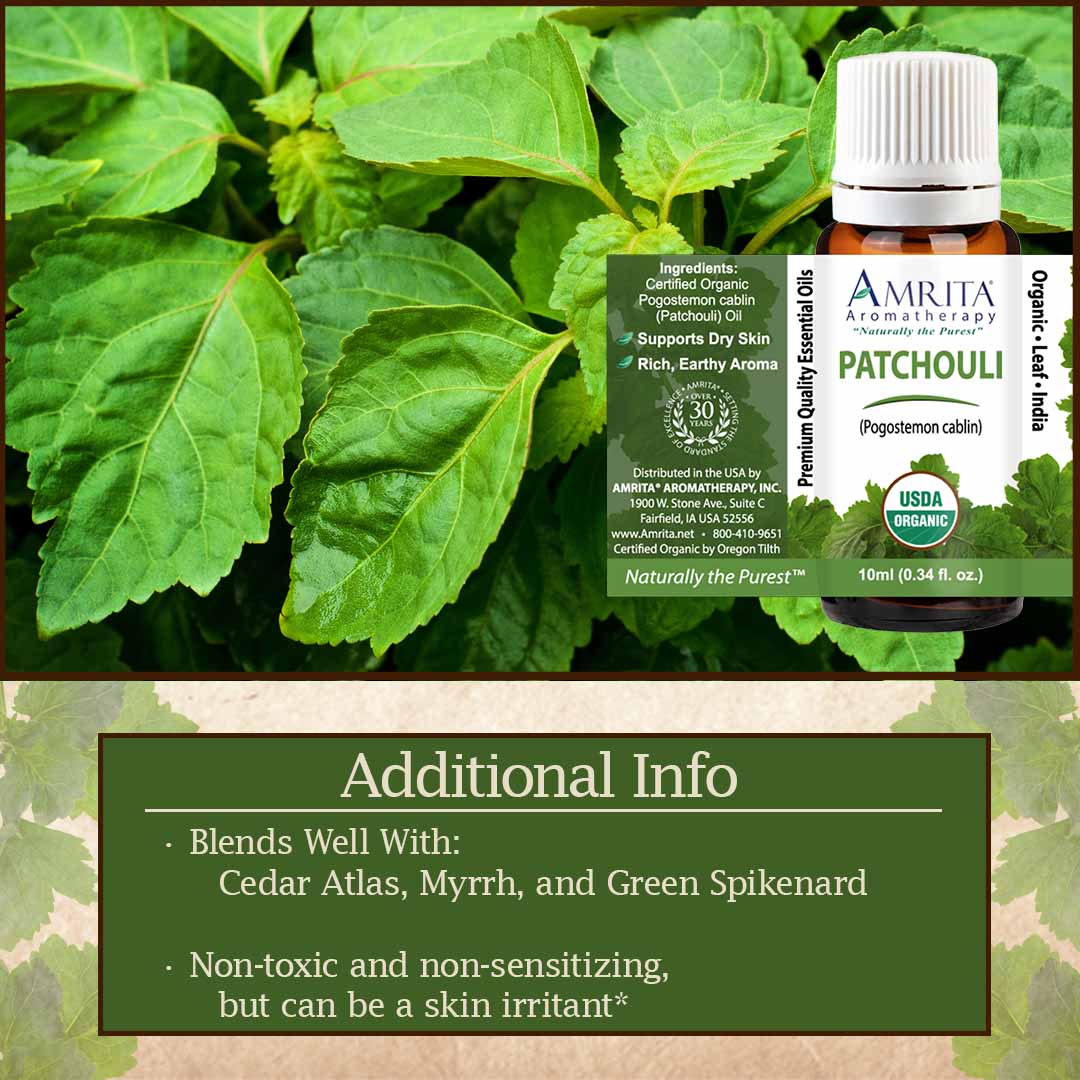Product Spotlight: Patchouli
Apr 5th 2023
Posted by Dr. Christoph Streicher and Chase F.
Of the five senses biologically used by humans, none is more closely interconnected to one’s memory than smell. So what image is conjured up when you read the word “Patchouli?” Do you think of a health foods store? Do you remember the smell of your grandmother’s purse when she would open it up to retrieve her pocket book? Or perhaps you immediately recall that one dorm neighbor from college — you know, the one with the peace sign on the door and Hendrix blasting out the windows?
Because of its radical rise in popularity during the Vietnam War era, many have come to associate Patchouli with the ones who cherished it the most at that time...the counterculture; the ones who were rejecting the status quo and looking for new ways to structure daily life in a postmodern society, sometimes by turning back to ancient methods. Patchouli, along with many other natural, herbal remedies, fit the bill for many of these environmentally minded seekers and became widely used, as its distinctive aroma ingrained itself into those who were "there, man!"
If this image of the 1960’s is your initial response to the mention of Patchouli, then let’s take a moment to “clear the air” (no pun intended). Perhaps we should zoom out a little on the history of this herb and clear up some common misconceptions.
What is Patchouli? Why is Patchouli associated with Counterculture?
Patchouli is an essential oil derived from leaves of the plant known scientifically as Pogostemon cablin. Widely known for its earthy, musky, sweet aroma, many folks recall it as being “the scent of the 60’s” due to its stark rise in popularity during that time. In fact, many have a very skewed if not negative perception of this herb due to its widespread use and overuse during this time. Patchouli has become a sort of olfactory dog-whistle if you will; reminding them only of bra-burnings, peace signs, and “tuned-in” dropouts. They might even tell you they “hate” the smell of it, but is this fair?
The truth is, Patchouli has been beloved by many people for thousands of years for many reasons, including its wonderful aroma! But, just as the sweetest melody can become so overplayed that it becomes an ear-sore, the same thing can happen with scent as well. Perhaps it only takes a few recollections of overzealous Patchouli users who may have overdone it just a bit before the odor acquires a certain stigma in one’s memory. Perhaps the herb had not been properly diluted by the user or was not blended with a properly complementary substance to balance it out.
It could be that scent and memory are so intertwined, and the aroma of Patchouli so unique, that its essence becomes unwittingly associated with someone’s experience(s) from the past, whether they be positive or negative. Unsurprisingly, there seem to be an equal amount of folks out there who absolutely adore the distinctive, sweet, earthy aroma of Patchouli. Again, because our sense of smell is so interconnected with our memory, and because this herb has such a wonderfully unique essence, someone who associates the aroma with pleasant memories will tend to be one of the Patchouli lovers among our population.
Ancient people of South Asia certainly recognized the benefits of Patchouli; not only medicinally, but for cosmetic and culinary applications as well. Ancient Egyptians also noticed, notably leaving ten gallons of the sharp, sweet, musky, infused oil in King Tut’s tomb! Eventually, trade routes would become far reaching enough to spread Patchouli to the Middle East, Africa, and throughout the globe.
Though its use dates to thousands of years ago, Patchouli did not gain popularity in the Western world until sometime around the 17th century. As it was used commonly as a bug deterrent for high-end, exotic textiles during shipping, it had become by the 19th century widely associated with high fashion and wealth. It seemed that everyone in Europe wanted to smell like Patchouli; So much so that its value soared to the pound-for-pound equivalent of gold!
Nowadays, Patchouli Essential Oil is widely used and available for all who seek its powerful therapeutic value. Steam distilled from the leaves of the plant, its naturally antibiotic, antimicrobial, and antifungal properties make it great for deterring infections of many sorts.* As an anti-inflammatory, Patchouli becomes a powerful ally in defeating a variety of pains.* And, of course, the wonderful aroma can lead to dramatic releases of mental and physical tension while creating an overall spiritually liberating effect, even acting as an aphrodisiac for some users… especially if properly diluted, blended with appropriate essential oil counterparts, and simply not overused.* Patchouli’s aroma should be used as a base or complement to others, not necessarily the main event. Some recipes include it subtly enough that the user would not even recognize it without consulting the ingredients.
What are the Therapeutic Benefits of using Patchouli Essential Oil?
Because Patchouli has such a distinctly complex aroma, it can be used to create a vast array of potentially mood stabilizing atmospheres.* It should be used sparingly, as its powerful presence can quickly become overpowering. For instance, just one drop of Patchouli with Spikenard or Rose might create a calming or aphrodisiacal effect, while a small amount blended with Jasmine could cause the user to feel more energized and invigorated mentally, physically, and spiritually.* When sparsely matched with properly balanced mid and upper notes Patchouli can be used as a subtle base, hardly perceptible to the user but splendidly satisfying. It will also act as a natural deterrent against pesky bugs, as previously mentioned in this article. We can probably all agree on the therapeutic value of being able to enjoy the outdoors while enduring fewer gnats and mosquitoes!
Patchouli is much more than just a pleasant aroma, however. It naturally exhibits antimicrobial, antibacterial, antiviral, and antifungal properties which make it a wonderful ally in the battle against many illnesses, seasonal and otherwise.* Symptoms associated with colds, flus, infections, wounds, dry skin, and other conditions can be effectively mitigated with this impressive essential oil.* Users also note its anti-inflammatory and analgesic benefits, helping to tackle bodily, muscular, and joint pain, while also enjoying its benefits for the circulatory system.* Many have noticed a reduction in the appearance of varicose veins with repeated use.* When properly utilized Patchouli can aid the user in many ways, contributing to a daily life with less stress, less pain, less illness, more pleasure, and a more liberated mindset overall.*
How would you use Patchouli?
Patchouli Oil can be applied utilizing a diverse variety of methods. Apply a properly diluted dose to skin topically to focus on specific areas of oiliness or pain, or use it in a whole-body massage to incorporate some of its respiratory benefits as well, such as deterrence of congestion and/or illness. Combine it with your favorite bath blend for some well-deserved relaxation, allowing it to relieve the tension in your body and mind, or focus on its powers directly on the respiratory system by diffusing and inhaling its rich essence with your favorite nebulizer or inhaler. Let’s have a look at how and why each method could be used.
- Overall Topical Application: 1-2% Dilution
- Patchouli Essential Oil is safe to be applied topically to the skin if it is properly diluted. Focus on areas where aching joints or sore muscles persist, where oily skin needs mitigation, where one desires a reduction in the appearance of varicose veins, or where cuts, scrapes, and abrasions need to be naturally cleansed and assisted with regeneration.* All the while, the user of this application method will enjoy the oil’s natural ability to gently deter and alleviate bug bites, respiratory congestion, and a range of potential illnesses.* Dilution for this method should be no more than 1-2% (5-10 drops per tablespoon of any carrier oil).
- Whole Body Massage Application: 1-2% Dilution
- You could also use Patchouli Oil by applying to the entire body via relaxing massage! This method provides a two-tiered effect against joint and muscle pain while simultaneously melting away physical and mental tension.* Applying in this way will also allow for the wonderful circulatory benefits of the compound, potentially aiding the immune system while reducing the appearance of varicose veins.* Symptoms of colds or flus can be deterred and alleviated with the whole-body massage method, as well as nasal and/or lung congestion.* Dilution for this method should be no more than 1-2% (5-10 drops per tablespoon of any carrier oil).
- Aromatic Bath Application: up to 2% Dilution
- Amrita’s Patchouli Essential Oil works splendidly with a soothing, aromatic bath. Aches and pains, mental and bodily tension, and respiratory congestion won’t stand a chance against the ancient powers of this wonderful herb.* You may also note a reduction in the appearance of varicose veins due to the circulatory benefits inherently achievable by applying in this manner.* As your immune system receives a boost in deterring and alleviating symptoms of a diverse range of afflictions, the user may note a significant reduction of bodily and mental tension, an invigorated sense of spirit, and possibly even some aphrodisiacal effects.* Dilution for this method should be no more than 2% (up to 10 drops added to bath salts or bath milk before adding to full bath).
- Diffusion / Inhalation Application: add a few drops to a Nebulizer or Nasal Inhaler
- When it comes to tackling respiratory issues with Patchouli, nothing else quite packs a punch like the diffusion / inhalation application.* Simply add a few drops to your favorite nebulizer or inhaler to help combat congestion in the nasal cavity or lungs while deterring and alleviating symptoms of respiratory afflictions.* The powerful essence will also work its magic by helping to affect your mood in a range of different ways… Depending on which other oils you choose to blend with it, a range of atmospheric essences can be achieved from calming to invigorating!* Speaking of blending, that brings us to…
What would blend well with Patchouli?
Amrita’s Patchouli Essential Oil blends perfectly with a vast array of other oils. If blended subtly with Cedarwood and Jasmine, Patchouli can really balance out the aromatic combination while totally mellowing out whoever is lucky enough to enjoy the mood stabilizing effects of such a combo.* To maximize Patchouli’s respiratory benefits, such as tackling and deterring symptoms associated with cold / flu, ‘tis the season to blend with Frankincense and Myrrh.* And last, but certainly not least… Test out the power of Patchouli as a liberator from inhibitions by letting it mingle with a little Spikenard and Rose!
Here are a few DIY recipes for you to try in your nebulizer:
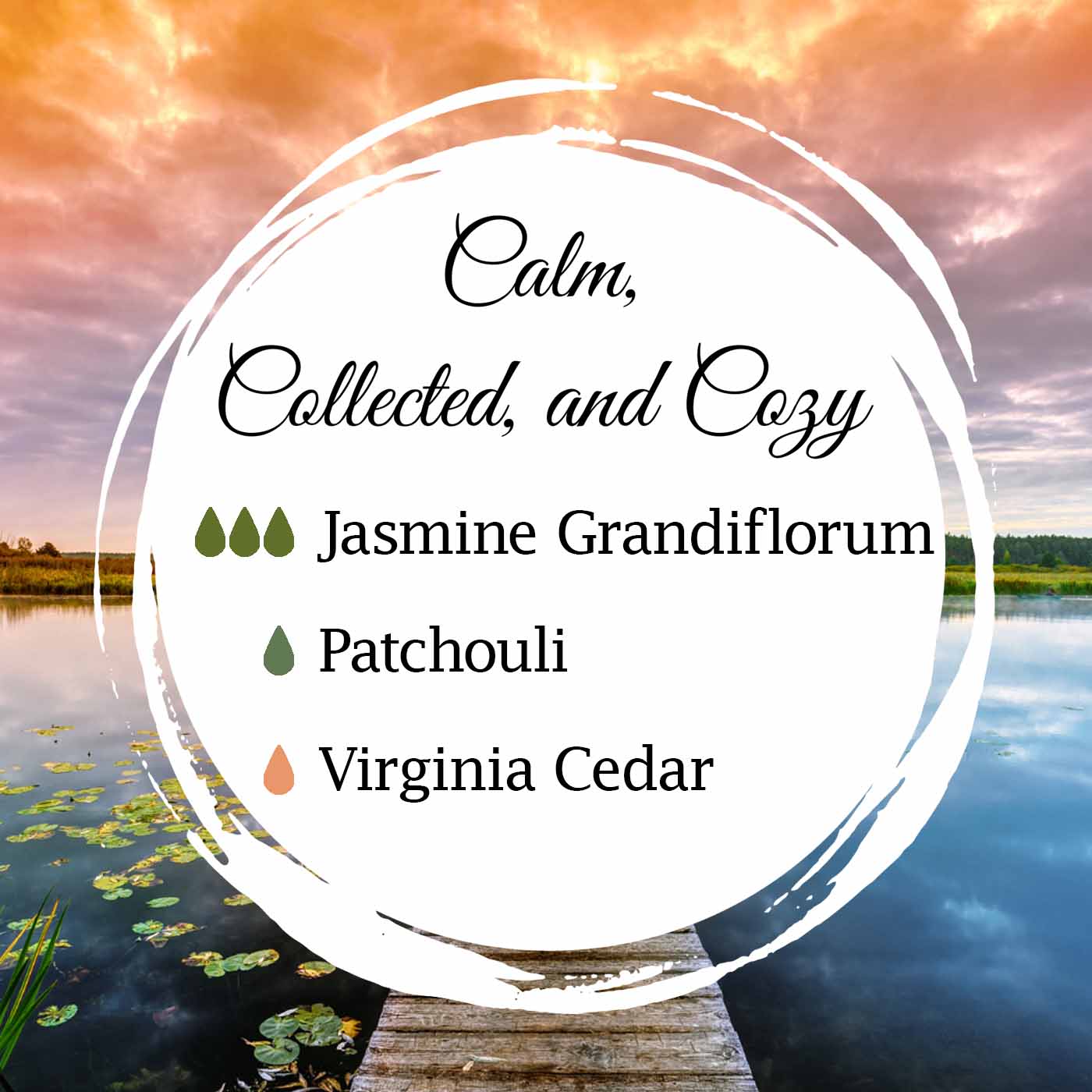 | 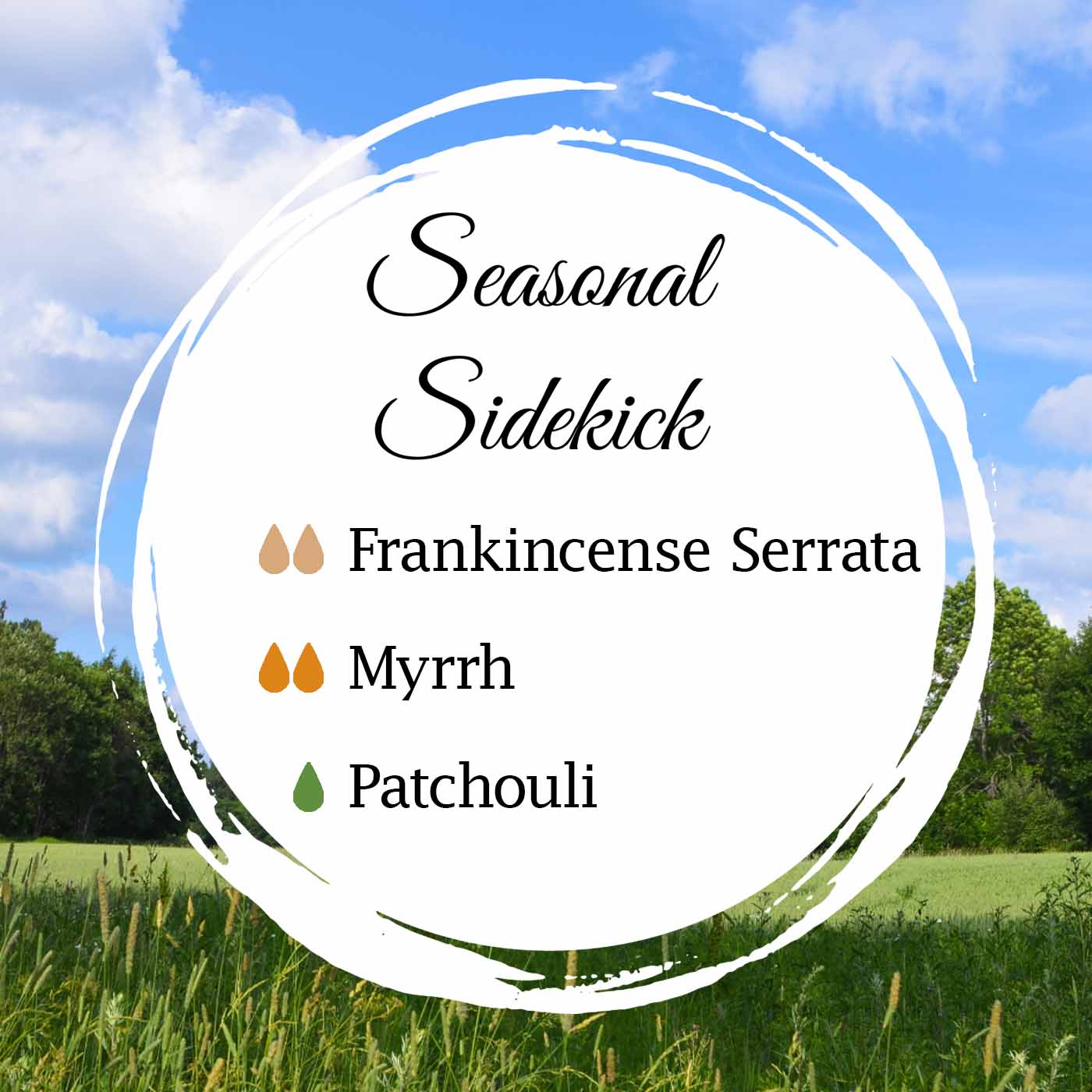 | 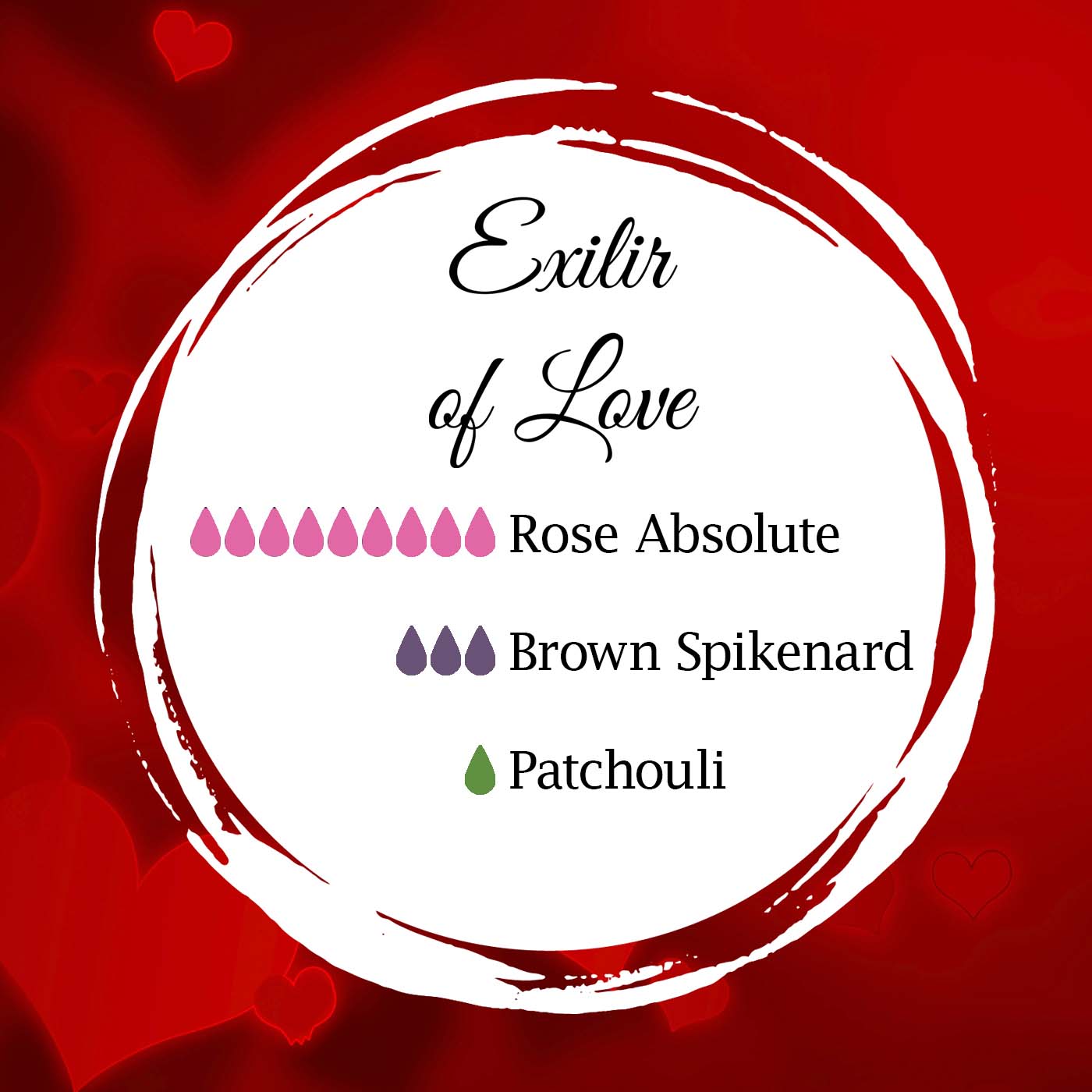 |
Final Thoughts from the Amrita Team
Hopefully by now it is clear that Patchouli can play much more subtle and dynamic roles than its typecast reputation from the 60’s may imply. For mood enhancement, for respiratory and circulatory health, for combatting bacteria and fungus, or simply for aromatic pleasure, give this wonderful oil a chance to earn the respect it deserves by incorporating it into your regular aromatherapy regimen today!* The time has come to rediscover the complexities of Patchouli, and come to know what the ancients already knew about it long, long ago.
Happy Blending!
*These statements have not been evaluated by the Food and Drug Administration. These products are not intended to diagnose, treat, cure, or prevent any disease.


